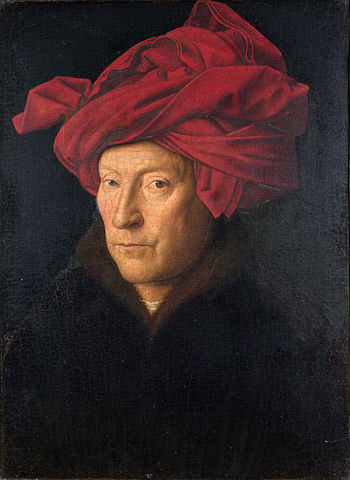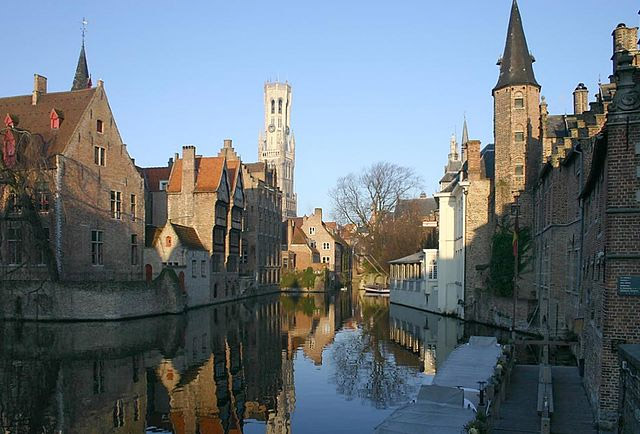The era shifts to the arts and literature of ancient Greece and Rome. Creativity and imagination bring achievements. Humanist scholars concerned about mankind are exalted. Painters begin to use worldly images in their work. Literacy among the secular world begins to flourish when the printing press is invented in Europe in the 15th century. North America is a beneficiary. See the recreated Gutenberg printing press at The International Printing Museum.
Jan van Eck (c.1390 - 1441) High Resolution and magnification reveal why Jan is credited with perfecting the technique of oil painting.
In service to Duke Phillip III of Burgundy, the uncle of the King of France, van Eyck is called upon to accompany a ducal Embassy to Portugal on an important, diplomatic mission—one which holds the promise of an alliance sealed with a kiss.
The charming anecdote tells of van Eyck making two portraits of Isabella, the King's daughter, for Philip to see her likeness before committing to marriage.
Phillip is apparently pleased because the Holy Roman Empress becomes Philip the Good's third wife. And, their son and successor, Charles the Bold, is born to bless the marriage. Can you picture these nicknames on vanity, license plates? These are images of the couple in later years.

Northern Europe, Early Renaissance (c.1420 -1550) Bruges (Dutch for Belgium) is conveniently located to transport goods through a canal connected to the Baltic Sea.
France and Germany are neighbors of the Kingdom of Belgium, consequently, Belgium has three official languages, so doing business is effortless.
The Arnolfini family become rich merchants due to geography and their keen business sense—not through nobility and the gift of inherited wealth. Their families produce the luxurious fabric you see.
Even though artists from this region and those from Italy visit and learn from each other, differences in climate and religious beliefs explain their dissimilar painting styles.

Go on to Describe, Analyze, Interpret & Conclude. Contact me for help.
The Arnolfini Portrait (1434. Oil on oak. 32 x 23 in. (82 x 60 cm.)
Flemish artists mixed powdered pigments in linseed or walnut oils. Italian artists preferred the Tempera technique consisting of powdered pigments and egg yolk mixed with enough water to brush smoothly.
Van Eyck is known for thinning his pigments to hasten drying between layers of paint he builds as part of his process. Images surrounding the convex mirror are evidence of his professional success.
Now look closely. In Zoom mode, you should see the artist and his wife. Artists often include themselves in their work.
If you think Jan's signature and his statement "Jan van Eyck was here" reminds you of graffiti painters, who sign off this way, the National Gallery of London agrees with you.
Giovanna wears a dress in a style similar to the one the virgin Saint is wearing on your right in the
Triptych of St. Catherine and the Donor.